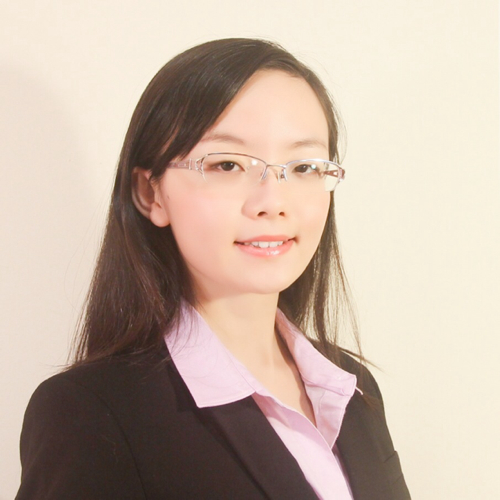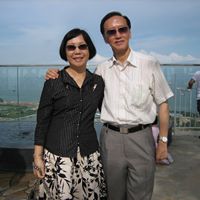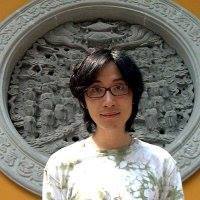Guang Qun Max Chen
age ~50
from Sunnyvale, CA
- Also known as:
-
- Guang Qun Chen
- Max Guangqun Chen
- Max Qun Chen
- Max Guang Chen
- Guang Q Chen
- Max G Chen
- Max Guang Qun Chen
- Guangqun Chen
Guang Chen Phones & Addresses
- Sunnyvale, CA
- Seattle, WA
- Yoncalla, OR
- 2955 26Th St APT B, San Francisco, CA 94110
- Palo Alto, CA
- Ithaca, NY
Resumes

Associated Director Biostatistics
view sourceLocation:
P/O Box 1027, Millbrook, AL
Industry:
Biotechnology
Work:
Amgen
Senior manager
OmniViz 2001 - 2005
Lead Statistician
Senior manager
OmniViz 2001 - 2005
Lead Statistician
Skills:
Financial Services
Consulting
System Integration
Consulting
System Integration

Guang Chen
view source
Application Architec At First Data Corporation
view sourceLocation:
United States
Industry:
Financial Services

Guang Chen
view sourceLocation:
United States
Name / Title
Company / Classification
Phones & Addresses
Owner
Sun & Moon Acupuncture
Offices and Clinics of Health Practitioners
Offices and Clinics of Health Practitioners
3905 Williams Rd, San Jose, CA 95117
Website: sunacup.com
Website: sunacup.com
President
HONG TUO STONE PRODUCTS, INC
Whol Brick/Stone Material
Whol Brick/Stone Material
237 10 St, Oakland, CA 94607
2493 Washington Ave, San Leandro, CA 94577
1355 Pearson Ave, San Leandro, CA 94577
2493 Washington Ave, San Leandro, CA 94577
1355 Pearson Ave, San Leandro, CA 94577
Owner
Sun & Moon Acupuncture
Acupuncture & Acupressure
Acupuncture & Acupressure
3905 Williams Rd, San Jose, CA 95117
4082602266
4082602266
Yoppi Yogurt LLC
Trademark Owner · Whol Dairy Products
Trademark Owner · Whol Dairy Products
1815 Ygnacio Vly Rd, Walnut Creek, CA 94598
7836 Pineville Cir, Hayward, CA 94552
7836 Pineville Cir, Hayward, CA 94552
President
PING YUEN RESIDENTS IMPROVEMENT ASSOCIATION
Civic/Social Association
Civic/Social Association
799 Pacific Ave, San Francisco, CA 94133
4157812860
4157812860
President
NEW ART STONES INC
1257 Terra Ave, San Leandro, CA 94578
President
C & Y NORTH CALIFORNIA TRADING, INC
1753 Jct Ave, San Jose, CA 95112
Managing
Sangomore, LLC
Financial Services · Real Estate Investment
Financial Services · Real Estate Investment
2059 Camden Ave, San Jose, CA 95124
2963 Cormorant Rd, Pebble Beach, CA 93953
3905 Williams Rd, San Jose, CA 95117
2963 Cormorant Rd, Pebble Beach, CA 93953
3905 Williams Rd, San Jose, CA 95117
Us Patents
-
Method And Apparatus For Terminating A Test Signal Applied To Multiple Semiconductor Loads Under Test
view source -
US Patent:8098076, Jan 17, 2012
-
Filed:Apr 1, 2009
-
Appl. No.:12/416375
-
Inventors:Guang Chen - San Jose CA, US
Charles Miller - Fremont CA, US
David Pritzkau - Brentwood CA, US -
Assignee:FormFactor, Inc. - Livermore CA
-
International Classification:G01R 31/20
-
US Classification:32475407, 32475411
-
Abstract:Apparatus for terminating a test signal applied to multiple semiconductor loads under test is described—for example apparatus for interfacing a test signal between a tester and a semiconductor device under test (DUT). In some examples, a probe card assembly may include at least one probe substrate each having test probes configured to contact test features of a DUT; a wiring substrate, coupled to the at least one probe substrate, having a connector configured for coupling with a source termination of a tester; a signal path formed on and/or in the wiring substrate and the at least one probe substrate, the signal path having a trace and trace stubs fanning out from the trace, an input of the trace being coupled to the connector and outputs of the trace stubs being coupled to the test probes; and a resistive termination coupled between the trace and at least one potential.
-
Chemical Arrays And Methods Of Producing The Same
view source -
US Patent:20050233337, Oct 20, 2005
-
Filed:Apr 19, 2004
-
Appl. No.:10/828357
-
Inventors:Bill Peck - Mountain View CA, US
Eric Leproust - San Jose CA, US
David Adaskin - San Jose CA, US
Guang Chen - San Jose CA, US
William Chesk - San Jose CA, US
Donald Schremp - San Jose CA, US
Stanley Woods - Cupertino CA, US -
International Classification:C12Q001/68
C12M001/34
B05D003/00 -
US Classification:435006000, 435287200, 427002110
-
Abstract:Methods and devices for fabricating a chemical array are provided. Embodiments include determining a chemical array layout in which each feature in the layout has a size that is chosen based on its composition and fabricating a chemical array according to the chemical array layout. In certain embodiments, at least two features of an array fabricated according to the subject methods are of different sizes. Embodiments also include chemical arrays having features of different sizes, e.g., fabricated according to the subject methods. Also provided are embodiments that include fluid deposition devices capable of fabricating chemical arrays having features of different sizes, e.g., for use in practicing the subject methods. Algorithms present on computer readable mediums for use in practicing the subject methods may also be provided in certain embodiments. Embodiments of the subject invention may also include systems and kits for use in practicing the subject methods.
-
Dynamic Power Load Line By Configuration
view source -
US Patent:20220335190, Oct 20, 2022
-
Filed:Jul 1, 2022
-
Appl. No.:17/856776
-
Inventors:Guang Chen - Fremont CA, US
Yuet Li - Fremont CA, US
Archanna Srinivasan - San Jose CA, US -
International Classification:G06F 30/347
-
Abstract:Systems or methods of the present disclosure may provide for determining a load line for operation of a programmable logic fabric where the load line is based at least in part on design configuration details for a design or a configuration rather for generic deployment of the programmable logic device. The load line may be determined using software modeling for the design or configuration. Additionally or alternatively, the load line may be determined using runtime testing and sensing of real-world parameters. This determination based on real-world parameters of a deployment of the configuration or design is based on a determination of a step load for the design or configuration.
-
Circuits And Methods For Detecting Decreases In A Supply Voltage In An Integrated Circuit
view source -
US Patent:20210313989, Oct 7, 2021
-
Filed:Jun 21, 2021
-
Appl. No.:17/353549
-
Inventors:- Santa Clara CA, US
Guang Chen - Fremont CA, US
Venu Kondapalli - San Jose CA, US -
Assignee:Intel Corporation - Santa Clara CA
-
International Classification:H03K 19/1778
H03K 21/08 -
Abstract:An integrated circuit includes a first voltage decrease detection circuit that has a first comparator circuit that compares a supply voltage in the integrated circuit to a threshold voltage to generate a first detection signal that indicates a decrease in the supply voltage, and a first timestamp storage circuit that stores a first timestamp in response to the first detection signal indicating the decrease. The integrated circuit includes a second voltage decrease detection circuit that has a second comparator circuit that compares the supply voltage to the threshold voltage to generate a second detection signal that indicates the decrease, and a second timestamp storage circuit that stores a second timestamp in response to the second detection signal indicating the decrease. The integrated circuit includes a control circuit that determines a location of a source of the decrease in the integrated circuit based on the first and the second timestamps.
-
Power Management For Multi-Dimensional Programmable Logic Devices
view source -
US Patent:20210036705, Feb 4, 2021
-
Filed:Oct 19, 2020
-
Appl. No.:17/074245
-
Inventors:- Santa Clara CA, US
Guang Chen - San Jose CA, US
Wendemagegnehu T. Beyene - San Jose CA, US
Ravi Prakash Gutala - San Jose CA, US -
International Classification:H03K 19/17772
H01L 25/18
H01L 23/538
H01L 23/00
G06F 30/34 -
Abstract:A device may include a fabric die coupled to an active interposer. The fabric die may include programmable logic fabric and configuration memory that programs the programmable logic fabric. The programmable logic fabric of the fabric die may access at least a portion of the active interposer to perform an operation. As discussed herein, different power management techniques associated with the active interposer may be used to improve operation of the device.
-
Electronic Systems For Integrated Circuits And Voltage Regulators
view source -
US Patent:20210004032, Jan 7, 2021
-
Filed:Sep 24, 2020
-
Appl. No.:17/031446
-
Inventors:- Santa Clara CA, US
Archanna Srinivasan - San Jose CA, US
Guang Chen - Fremont CA, US
Janani Chandrasekhar - San Jose CA, US -
Assignee:Intel Corporation - Santa Clara CA
-
International Classification:G05F 1/56
H03K 19/17736
H03K 17/22 -
Abstract:An electronic system includes first, second, third, and fourth integrated circuit dies. The third integrated circuit die has a first voltage regulator circuit. A supply voltage output of the first voltage regulator circuit is coupled to provide a first supply voltage to a supply voltage input of the first integrated circuit die. The first voltage regulator circuit generates a first power ready signal that indicates when the first supply voltage has reached a first threshold voltage. The fourth integrated circuit die has a second voltage regulator circuit that generates a second supply voltage in response to the first power ready signal. A supply voltage output of the second voltage regulator circuit is coupled to provide the second supply voltage to a supply voltage input of the second integrated circuit die.
-
Method For Automatically Labeling Objects In Past Frames Based On Object Detection Of A Current Frame For Autonomous Driving
view source -
US Patent:20210004643, Jan 7, 2021
-
Filed:Jul 2, 2019
-
Appl. No.:16/460192
-
Inventors:- Sunnyvale CA, US
Guang CHEN - Sunnyvale CA, US
Weide ZHANG - Sunnyvale CA, US
Yuliang GUO - Sunnyvale CA, US
Ka Wai TSOI - Sunnyvale CA, US -
International Classification:G06K 9/62
G06K 9/00 -
Abstract:A list of images is received. The images were captured by a sensor of an ADV chronologically while driving through a driving environment. A first image of the images is identified that includes a first object in a first dimension (e.g., larger size) detected by an object detector using an object detection algorithm. In response to the detection of the first object, the images in the list are traversed backwardly in time from the first image to identify a second image that includes a second object in a second dimension (e.g., smaller size) based on a moving trail of the ADV represented by the list of images. The second object is then labeled or annotated in the second image equivalent to the first object in the first image. The list of images having the labeled second image can be utilized for subsequent object detection during autonomous driving.
-
Method For Autonomously Driving A Vehicle Based On Moving Trails Of Obstacles Surrounding The Vehicle
view source -
US Patent:20200406893, Dec 31, 2020
-
Filed:Jun 28, 2019
-
Appl. No.:16/457847
-
Inventors:- Sunnyvale CA, US
Guang CHEN - Sunnyvale CA, US
Weide ZHANG - Sunnyvale CA, US
Yuliang GUO - Sunnyvale CA, US
Ka Wai TSOI - Sunnyvale CA, US -
International Classification:B60W 30/095
B60W 30/09
G06K 9/00
G05D 1/00 -
Abstract:During the autonomous driving, the movement trails or moving history of obstacles, as well as, an autonomous driving vehicle (ADV) may be maintained in a corresponding buffer. For each of the obstacles or objects and the ADV, the vehicle states at different points in time are maintained and stored in one or more buffers. The vehicle states representing the moving trails or moving history of the obstacles and the ADV may be utilized to reconstruct a history trajectory of the obstacles and the ADV, which may be used for a variety of purposes. For example, the moving trails or history of obstacles may be utilized to determine lane configuration of one or more lanes of a road, particularly, in a rural area where the lane markings are unclear. The moving history of the obstacles may also be utilized predict the future movement of the obstacles, tailgate an obstacle, and infer a lane line.
Medicine Doctors

Guang Y Chen, Saratoga CA - LAC
view sourceSpecialties:
Acupuncture
Address:
1848 Saratoga Ave Suite 6, Saratoga, CA 95070
4088666065 (Phone), 4088660980 (Fax)
4088666065 (Phone), 4088660980 (Fax)
Languages:
English

Guang Yue Chen, Saratoga CA
view sourceSpecialties:
Acupuncturist
Address:
1848 Saratoga Ave, Saratoga, CA 95070
Googleplus

Guang Chen
Education:
Columbia College of Columbia University in the City of New York - Mechanical Engineering, Shanghai Jiao Tong University - Mechanical Engineering

Guang Chen

Guang Chen

Guang Chen

Guang Chen

Guang Chen
Tagline:
Liberte, egalite, fraternite.

Guang Chen

Guang Chen
Tagline:
Take your passion and make it come true.
Plaxo

Chen Guang
view sourcechina
Youtube
Classmates

Guang Hui Chen
view sourceSchools:
Anacortes High School Anacortes WA 2000-2004
Community:
Tina Masters, Julie Stewart, Geri Brantly

Manhattan Comprehensive N...
view sourceGraduates:
Wei Guang Chen (1998-2000),
James Barlow (1990-1991),
Joseph Adorisio (1997-1997),
Michelle James (2001-2001),
Wilnelia Cardona (1997-2000)
James Barlow (1990-1991),
Joseph Adorisio (1997-1997),
Michelle James (2001-2001),
Wilnelia Cardona (1997-2000)

Guang Chen
view source
Guang Chen
view source
Guang Chen
view source
Guang Z. Chen
view source
Yu Guang Chen
view source
Guang Chen
view source
Guang Chen
view source
Chen Wei Guang
view sourceFlickr
Myspace
Get Report for Guang Qun Max Chen from Sunnyvale, CA, age ~50














